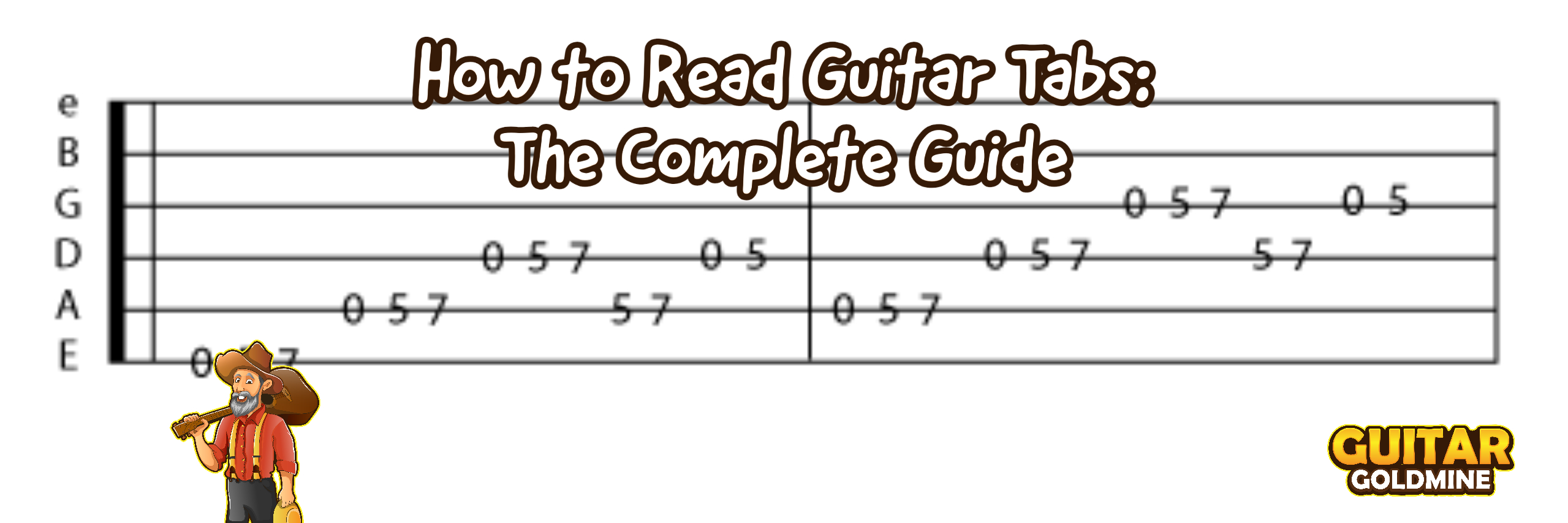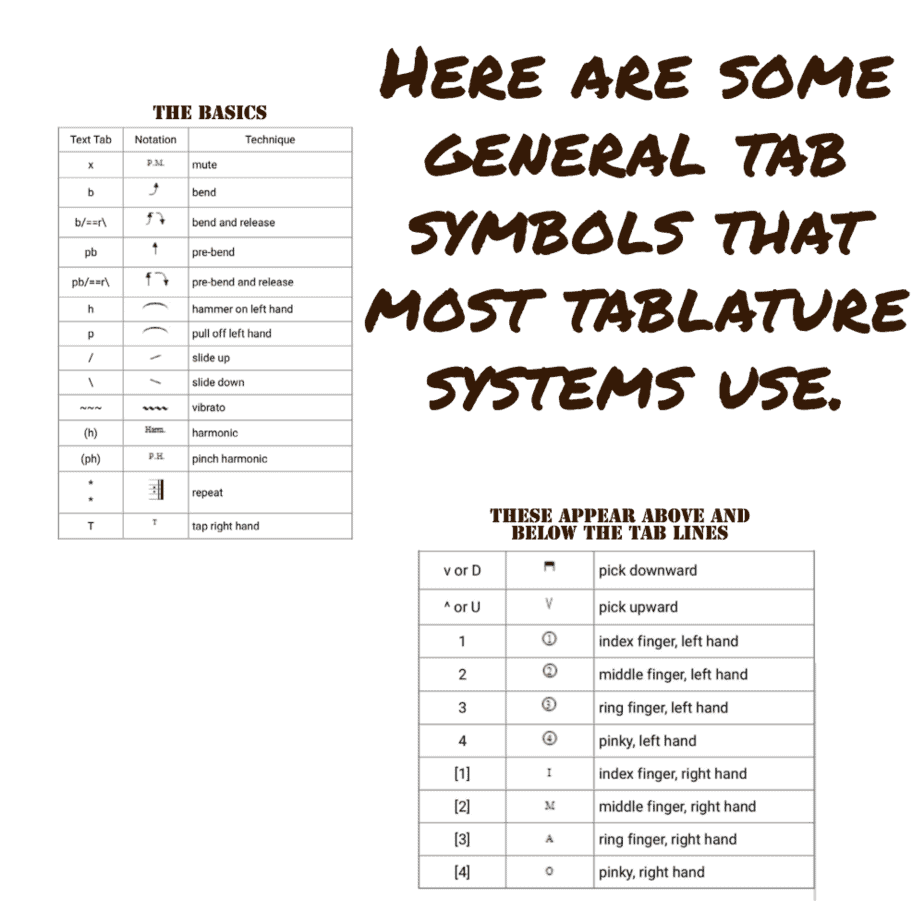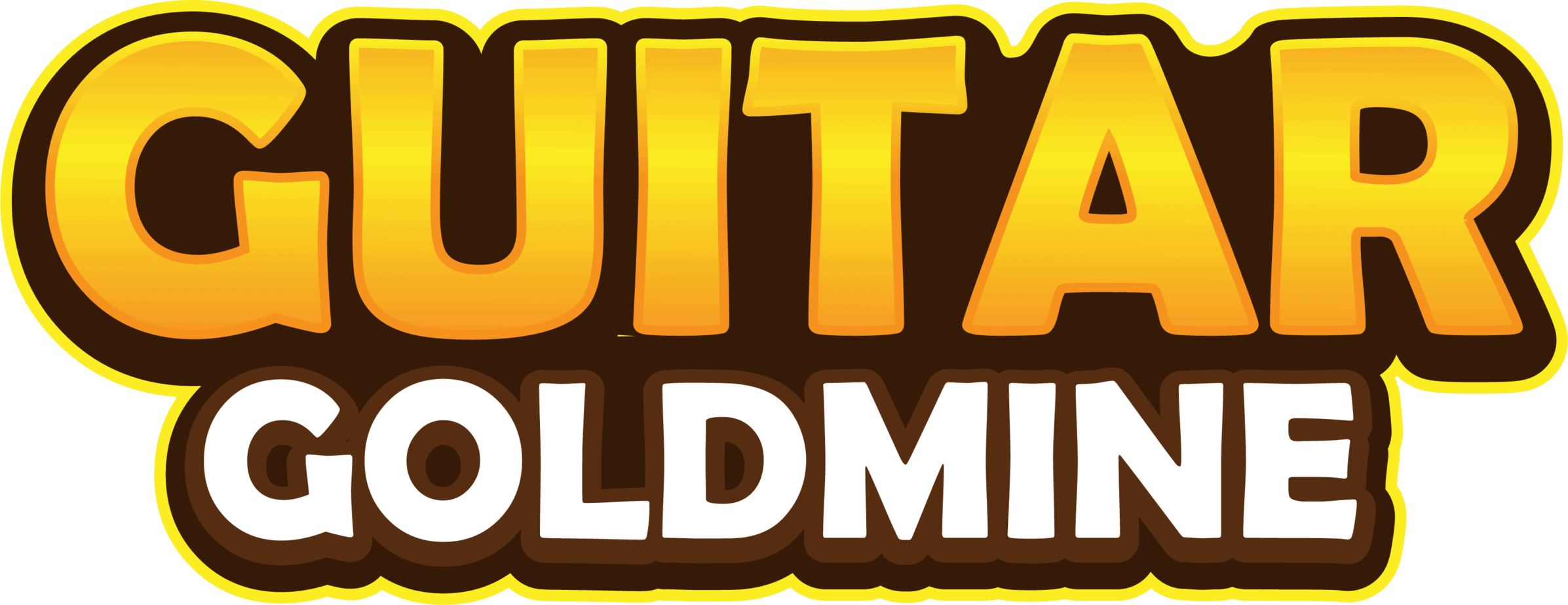 Guitar tabs provide an easy way for guitarists to read and play music. They provide a convenient way to quickly read and locate notes but require you to know the rhythm and feel of the song before it is played. Therefore, knowing how to read guitar tabs is an important thing for any guitarist or aspiring musician.
Guitar tabs provide an easy way for guitarists to read and play music. They provide a convenient way to quickly read and locate notes but require you to know the rhythm and feel of the song before it is played. Therefore, knowing how to read guitar tabs is an important thing for any guitarist or aspiring musician.
The following article will highlight everything you need to know about guitar tablature, from its strengths and pitfalls to its different versions and symbols used. If you feel that you are ready to start reading tabs, this is the guide for you.
Things to Know Before You Start Reading Tabs
To properly learn how to read guitar tabs, there are quite a few things that you will need to know. In fact, there are many things you need to know before, which includes first understanding the numbering systems of fingers, strings, and frets. Below is some information on these things that will help you going forward:
- Finger Numbering: Each finger is assigned a number
#1 – Index finger
#2 – Middle finger
#3 – Ring finger
#4 – Pinky finger
- Strings: The strings of your guitar are numbered 1-6. These strings correspond with the lines of a tablature. Number 1 will be the thinnest and highest string (high E), and number 6 will be the thickest and lowest string (E).
- Frets: Frets are the metal dividers along the neck of your guitar. The nut is numbered 0, and each fret after that goes up by 1. This article will go more in-depth with frets in a moment.
That is not all you need to know before actually learning how to read guitar tabs. You must also understand the structure of tabs, which means understanding the different components. The different components of a guitar tab are as follows:
- Horizontal Lines: There are typically six horizontal lines to a tab. These horizontal lines represent the strings of your guitar, one for each note. The horizontal lines allow for a chronological reading of the notes. Notes, represented as numbers, will lie along these lines.
- Numbers: Numbers in a tablature represent notes. They tell you which fret number to play on. Numbers are usually separate but can be stacked atop one another.
- Stacked Numbers: Stacked numbers indicate chords.
- Letters and Other Symbols: Letters and symbols help you to determine tone, timing, and rhythm.
- Time Signature: Usually 4/4, the time signature on the left side of a tab indicates that there will be 4 (or more) beats to a bar.
All of this will serve as foundational knowledge going forward. Since you now have a decent understanding of the structure of a tab, it is time to get into what this all means.
Reading Guitar Tablature: Overview
Many people use guitar tabs because of how easy they are to read. If only using standard notation, it can be hard for beginners to easily translate hand placement from notation. Standard notation only uses four lines, while guitar tabs use six, having one line for each string. This makes guitar tabs much easier to read and follow along with.
Each of the six lines in a guitar tab represents a string of the guitar. To avoid confusion, this article will talk about tabs using standard EBGDAE tuning. Guitars can be tuned differently, and this is annotated in the guitar tablature. For now, we will focus on reading tabs in standard tuning.
- The highest line on a tab represents a high E, which corresponds to the thinnest string on your guitar.
- Each following line represents a lower note on your guitar: B, G, D, A
- The lowest note (and thickest string) is E
Learning which line corresponds with which string on your guitar is the first step towards learning how to read guitar tabs. The second step is learning what the numbers mean on each line.
Numbers and Chords on Guitar Tablature
On a guitar tab, you will see several numbers on each line, placed chronologically just like notes on standard musical notation. Learning about numbers and chords is one of the most important steps, so gaining a proper understanding is imperative.
This section will go over what these numbers mean and how chords can be read from these numbers.
Numbers
The numbers on a guitar tab correspond to the frets, which are the metal inserts on the fingerboard of your guitar and indicate where you should put your fingers for pitch change or semitone. A typical guitar usually has 20 frets. The way these frets work is as follows:
- The lower pitches are higher on the neck closer to the headstock
- Higher pitches are closer to the body
Numbers on a guitar tab indicate which notes your left hand will be playing on each fret. Guitar frets are numbered, starting with 0 at the nut or open (not touching). After the nut, frets are numbered 1, 2, 3, and so on, for as many frets as your guitar has.
If a tab has a 0, then you are to play with an open hand. If the guitar has a 1, then you are to play the note (annotated by which line the 1 is in) in the first fret of the guitar. It is best to place your finger about three-quarters of the way to a fret, not directly atop of it.
For example, if the numbers 1 and 2 are placed chronologically in a tab, with the 1 on the B line and 2 on the G line, then you are to play a B note on the first fret and a G note on the second fret. Reading of the numbers is left to right, just as if you were reading words.
Chords
As you have just learned, the numbers on a guitar tab indicate which notes will be played in which tones. But the numbers on a tab are not ways one per note. Sometimes, three or more numbers can be stacked atop one another, indicating a chord.
When notes are stacked atop one another, you are to place multiple fingers on the strings at once. Chords can be difficult if you are a beginner, so make sure you are comfortable playing single notes before you move on to chords.
An easy way to learn chords before you start reading tabs is to use chord diagrams. A chord diagram is presented vertically as if you are looking at the guitar standing up. Frets are aligned with how they are in a real guitar, with 0 being at the top, 1 being just below, and so on. The vertical lines on the diagram represent the strings of the guitar.
With a chord diagram, you can easily visualize where your fingers need to be on the fretboard of the guitar. Finger placement is represented with dots and then noted at the bottom with numbers that correspond to each finger (as talked about earlier). A chord diagram is a great way to get started before you take on tabs.
Other Symbols on Guitar Tabs
You will see many symbols on guitar tabs. These symbols come in the form of lines, arcs, and letters. Each symbol indicates a different way to play each note or chord and how to move on to the next note or chord. These symbols do not fully replace the need for staff notation, but they do help to guide rhythm and tone.
Slides, hammer-ons, and pull-offs are the first symbols to be discussed. While a slide might sound simple enough, these techniques are hard to master. Fortunately, once you know what you are looking for, they are easy to read and identify.
- Slides: Slides are represented by an upward (/) or downward (\) slanting line between two fret numbers. A slide indicates for you to play a note and then slide your fingers up or down to the next note without lifting them. Slides can also be annotated by the letter “S.”
- Hammer-ons: Hammer-ons are represented by an arch above two fret numbers, and usually with an “H” above that. Hammer-ons indicate that you only pick (strum) the first note and then “hammer-on” to the next note. Hammer-ons can also be notated like 2h5h3, instead of including the arc.
- Pull-offs: Pull-offs are the opposite of hammer-ons. They are indicated with an arc and a “P” on guitar tabs. Instead of hammering on, you are “pulling off” to a lower note.
There are quite a few symbols to keep in mind when you are reading guitar tabs. Some of the other important symbols are:,
- Palm Mute: Palm-muting is represented as “PM” in tab. Palm-muting involves putting your palm against the strings to deaden sound for a pause.
- Muted Notes: Muted notes are annotated by an “X.” Muting a note involves putting a finger over a string before plucking it to deaden the sound a bit.
- String Bends: Bends are indicated by either the letter “B” or a curved line with an arrow. With a string bend, you are pushing the string either up or down to get a different pitch.
- Vibrato: Vibrato is symbolized by a wavy line above your fret numbers. Vibrato involves repeatedly bending and releasing your guitar strings. A stronger vibrato is represented by a thicker wavy line.
- Harmonics: Harmonics can be indicated by several different symbols. Natural harmonics are indicated by “< >” with a fret value in between the two symbols

Are Tabs More Helpful Than Staff Notation?
Tabs are not more useful than staff notation. Becoming a good guitarist will require you to be able to read both tabs and staff notation. Neither tabs nor staff notation is intended to stand alone, to exist without the other. This is because there are advantages and drawbacks to both tabs and staff notation.
Tabs show you several things that standard musical notation does not. For example, tabs show you specifically which frets to play on which strings. They are made specifically for guitar, and not many instruments have their own specific notations like this.
However, there are shortfalls of using tabs as well. There is a ton of shorthand, or symbolism, used in tablature, which must be heavily memorized. These symbols also are not uniform and can vary from source to source. Also, these symbols can become extremely crowded and confusing to read on your music sheet.
When using tablature to learn guitar, novices can easily get confused about the rhythm of a song. This is because rhythm is not accurately annotated in tabs. Tabs provide a great way to get started with guitar. But, they cannot always stand alone because you are not going to automatically know every rhythm to every song you play.
Rhythm Annotations for Tabs
Some advanced tabs do help the user keep track of rhythm. While it is not perfect, it does help guitarists to bypass the use of standard music notation while still being able to account for rhythm.
Rhythm marks come in the form of letters, as most annotations do. These letters are marked atop each tab, in line with the fret annotations. The letters for keeping rhythm are as follows:
- W – Indicates a whole note
- H – Indicates a half note
- Q – Indicates a quarter note
- E – Indicates an eighth note
- S – Indicates a sixteenth note
Reading tabs and knowing all of the symbols that go along with them can be daunting at first. Do not feel discouraged, though, because tabs are one of the fastest and easiest ways to learn guitar. You do not need to know all of the symbols right off the bat to play.
If you are intimidated by all of the symbols, just listen to the song you are about to play a few times so that you get a feel for its rhythm. Once you have a good handle on when to play the notes, you will not need all of the extra symbols (at least in simple, beginner pieces).
Bass Guitar Tabs
Because bass guitars hardly use chords, they are a bit easier to learn. Bass guitars have four strings, and from highest to lowest, their notes are G, D, A, E. Tablature for bass guitars is similar to regular guitars, in that numbers act as fret notes. Frets are also numbered in the same way as regular guitars.
A main component of bass tabs is the bar. Bars are vertical lines that break the horizontal lines you see in standard guitar tabs. These bars indicate when the count starts over. Other than this, the same symbols used for guitar tabs are also used for bass tabs.
One main role of a bass player is to carry the rhythm of the song. Because of this, bass tabs are not as popularly used as are regular guitar tabs. The bass player must know the rhythm of a song if he or she is using tabs because, as mentioned before, rhythm is hardly indicated on tabs.
Formal Tab Vs. Internet Tab
There are two different kinds of modern guitar tabs: formal tabs and internet tabs. Formal tabs are well annotated and usually published, while internet tabs are usually less easy to read, as they are made from keyboard symbols.
Formal Tabs
Formal, published tabs typically are annotated as accurately as possible, right down to the rhythm annotations and vibrato. Formal tabs also usually come with staff notations above them so that players can look at both sets of music simultaneously.
When learning to play from tabs, you may want to start by learning from formal tabs because the symbols are not as jumbled together and confusing to look at. Formal tabs also have the benefit of including staff notation for your convenience.
Internet Tabs
Not all tabs are going to be formal. Around the world, users are creating their own versions of tabs, called internet tabs, which can easily be created on any word processing system. Internet tabs are typically lacking annotation and symbols that could otherwise help users to better understand rhythm and tone.
Internet tabs are a way for the average guitar player to create and annotate their own music. They are typically straightforward, with strings symbolized as a series of dashes. Every symbol used on an internet tab can be found on a computer interface, and thereby can sometimes be confusing to a new player trying to learn.
Online Tools for Learning Guitar Tabs
Some of the best resources for learning to play guitar are on the internet. Below are some useful sites and apps that will aid you in your process of learning tabs. The best part is that most of them are free to use.
- ShredAcademy: Free online resource, most content can be found on YouTube
- Songsterr: Free online resource that allows you to playback tabs to hear what they are actually supposed to sound like
- Guitar Pro Tabs: Free website for learning tabs, allows you to download and playback tabs
- GuitarTabs.CC: Free website with a multitude of different modern tabs to learn and listen to
- GuitarNick: Free website offering tab lessons, tutorials, backing tracks, and tab PDFs
Another great resource is Youtube. Youtube has a multitude of free video tutorials that will help you to better visualize and understand how tablature works.

Recent Comments